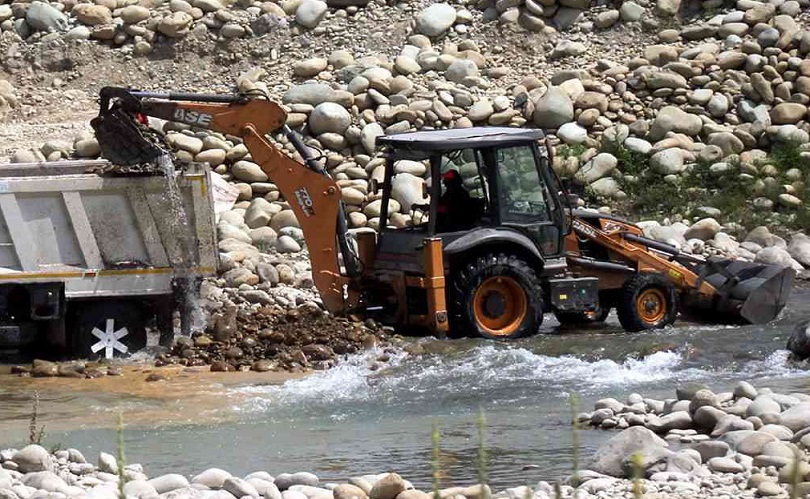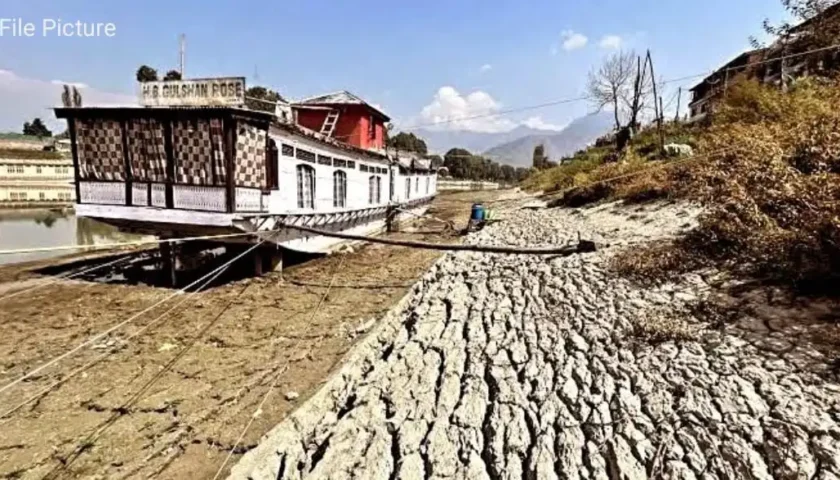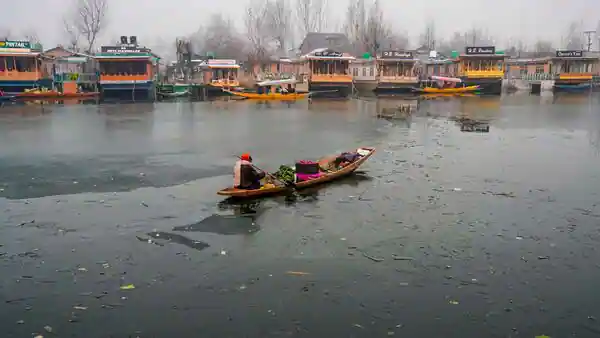Illegal Riverbed Mining in Kashmir Leading to Drying Up of Springs
By: Javid Amin
Srinagar, February 8, 2025 – The natural springs of Kashmir, which have been crucial sources of drinking water for centuries, are under threat due to illegal riverbed mining. One such example is Bulbul Nag, located in Newa village of Pulwama district, which has historically provided water to the entire area. This spring, among many others, has been chosen by the Public Health Engineering (PHE) Department, also known as the Jal Shakti Department, as a key water source.
Historical Significance and Current Crisis
Bulbul Nag has been a lifeline for over 45 years, supplying drinking water to more than two dozen villages in Pulwama. The PHE Department installed advanced water pumping machines decades ago to harness the spring’s abundant water supply. However, the situation has drastically changed over the past 3 to 4 years. Locals report that the water level in Bulbul Nag has significantly receded, with multiple aquifers now reduced to just one or two. This depletion has severely impacted the water supply to approximately 20,000 to 30,000 residents in Newa and surrounding villages.
Impact of Illegal Mining in Romshi
The primary culprit behind the dwindling water levels in Bulbul Nag is the illegal mining in the nearby Romshi stream. This is not an isolated issue; numerous springs around smaller rivers originating from the Pir Panjal mountain range, such as Vaishav, Rambiara, Romshi, Doodh Ganga, Shali Ganga, and Sukhnag, have also dried up. These activities have led to a regional water crisis, further exacerbated by insufficient rainfall and snowfall.
Case Study: Daulatpura Village
The situation is not unique to Bulbul Nag. In Daulatpura village of Chadoora, the government invested nearly Rs 30 crores in developing a water supply scheme over the past 15 years. However, the source of this water supply, Arbal Naag, dried up due to constant riverbed mining in Doodh Ganga. This issue was highlighted in a detailed article in the noted science magazine Down to Earth.
Environmental Impact in Sukhnag
The destructive impact of illegal riverbed mining is evident in Sukhnag stream, which flows through dozens of villages in Beerwah tehsil of Budgam district. Despite repeated pleas to the District Administration, Irrigation and Flood Control Department, Geology & Mining Department, and Fisheries Department, no action was taken. This led to a petition being filed in the National Green Tribunal (NGT) in New Delhi last year.
Findings of the NGT
The Hon’ble NGT deputed a team to visit the site and file a detailed report on the plunder of the fresh water stream. According to the Geology & Mining Department J&K, only Rs 1.53 crore has been realized as compensation over the past four years against 77 short-term permits (STPs). This amount is not even 2% of the actual market value of the material. These permits were issued to a private contractor working on the Srinagar Ring Road construction.
Impact on Local Springs
In villages like Zainigam, Sail, Kangripora, and Kanigund, as many as 20 springs have dried up. The locals informed the visiting NGT team on December 26, 2024, that these springs were fed by the Sukhnag stream. Deep mining activities, reaching depths of 10 to 20 meters over the past 3 to 4 years, have severed the supply lines to these springs. Although the NGT intervention halted the illegal activities, the restoration of the dried-up springs remains uncertain.
Conclusion
Illegal riverbed mining has caused an environmental disaster and significant financial loss to the state exchequer across Jammu & Kashmir. This deep mining has lowered the water table around streams and rivers, resulting in dried-up bore wells and tube wells in many villages. The coming months and years could see even worse conditions due to the scarcity of snowfall and rainfall. It is imperative for the government to consult experts, take decisive action to address this crisis, and hold responsible officials accountable for their role in the destruction of these vital water sources.




